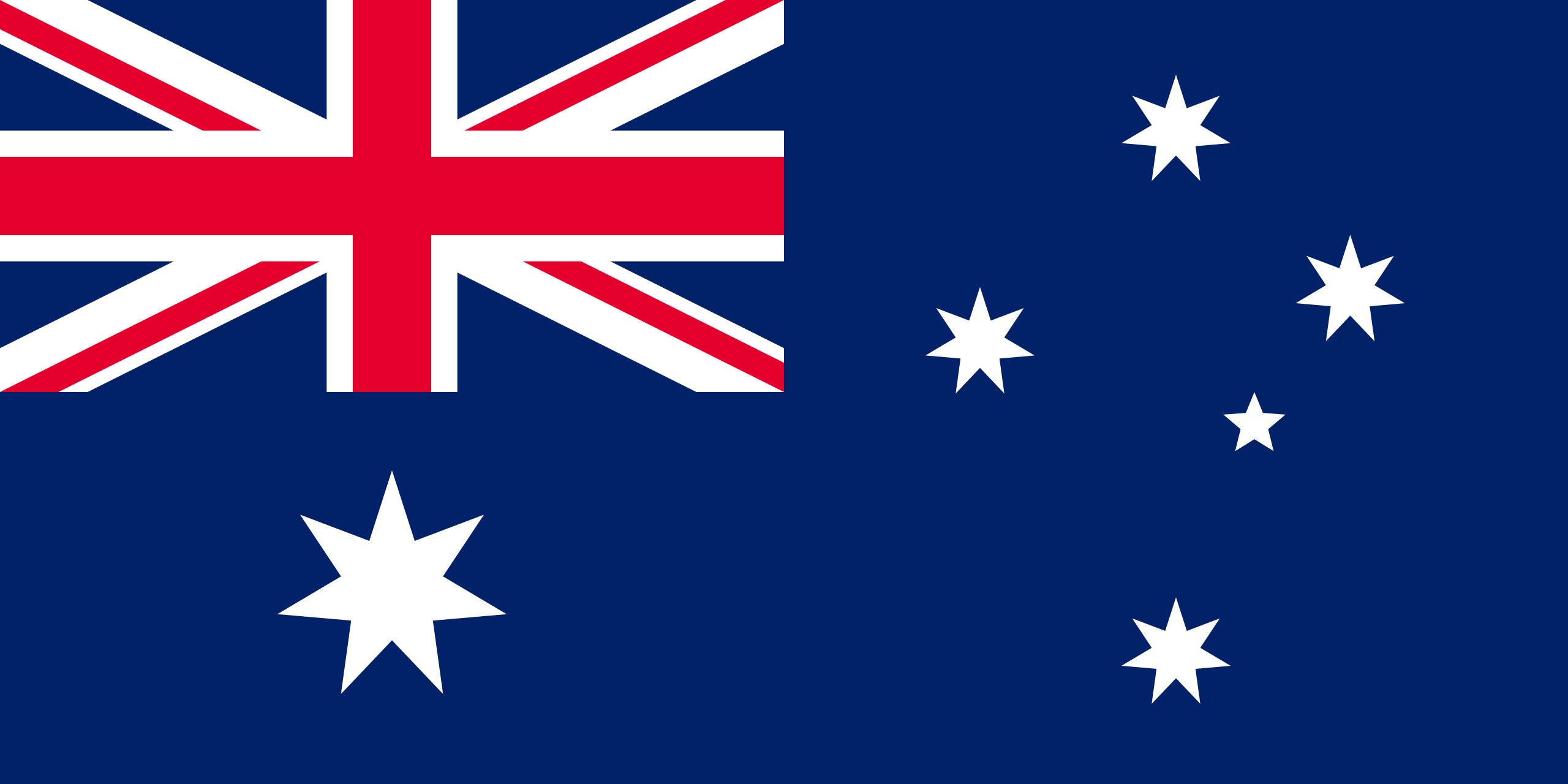The flag of Australia is a significant national symbol that represents the Commonwealth of Australia. Here are some facts about the flag of Australia:
- Design: The Australian flag features a dark blue field with the Union Jack (the flag of the United Kingdom) in the canton (upper hoist-side corner) representing Australia’s historical ties to the British Commonwealth. On the fly (right-hand side) side of the flag, there is a large white seven-pointed star known as the Commonwealth Star. Below the Union Jack and to the right of the Commonwealth Star, there is a representation of the Southern Cross constellation, which consists of five white stars.
- Southern Cross: The five white stars on the flag represent the Southern Cross, a prominent constellation visible from the Southern Hemisphere. The stars are Alpha Crucis, Beta Crucis, Gamma Crucis, Delta Crucis, and Epsilon Crucis. The Southern Cross has been used as a navigational aid and has cultural significance to Indigenous Australians.
- Commonwealth Star: The Commonwealth Star, also known as the Federation Star, has seven points representing the six states of Australia (New South Wales, Victoria, Queensland, South Australia, Western Australia, and Tasmania) and the territories (Australian Capital Territory and Northern Territory). The star is an emblem of national unity.
- Union Jack: The inclusion of the Union Jack on the flag represents Australia’s historical connection to the United Kingdom, as it was initially a British colony. It reflects Australia’s status as a constitutional monarchy and member of the Commonwealth of Nations.
- National Colours: The blue background on the flag is known as “Australian Blue” and represents the clear skies of the country. The red, white, and blue colors are commonly associated with Australia and are featured in various national symbols and emblems.
- Adoption: The current design of the Australian flag was chosen through a national competition held in 1901. It was first flown on September 3, 1901, and formally adopted as the national flag on February 14, 1954.
- Usage and Protocol: The Australian flag is flown prominently throughout the country, including on government buildings, schools, and during national events and ceremonies. It has specific protocols for its display, such as the correct positioning, respectful treatment, and handling when raising, lowering, or folding the flag.
The flag of Australia serves as a unifying symbol of the nation, representing its history, diverse culture, and identity. It is a source of pride for Australians and is used to demonstrate national unity and presence both domestically and internationally.
Air Force Ensign of Australia
Air Force Ensign of Australia (1948–1982)
Air Force Ensign of the United Kingdom
Anangu Traditional Owners Flag
Anglican Church of Australia
AntiTransportation League Flag
Australian Aboriginal Flag
Australian Air Chief Marshal Officer Distinguishing Flag
Australian Cornish-heritage flag
Defence Ensign [Converted]2 copy
Australian English-heritage flag
Australian Federation Flag
Australian Irish-heritage flag
Australian Manx-heritage flag
Australian Scottish-heritage flag
Australian South Sea Islanders flag
Australian Welsh-heritage flag
Blue Ensign of the Commonwealth Lighthouse Service
Capricornia Flag (Ian Johnston Proposal)
Car Flag of the Prime Minister of Australia (Flags of the World)
Civil Air Ensign of Australia
Civil Ensign of Australia
Civil Ensign of Australia (1901–1903)
Civil Ensign of Australia (1903–1908)
Coronation Standard of Australia
Coronation Standard of Australia (1911)
Ensign of the Sea Cadet Corps
Flag of Anangu Pitjantjatjara Yankunytjatjara
Flag of Australasian team for Olympic games
Flag of Australia (1901–1903)
Flag of Australia (1903–1908)
Flag of Australia (converted)
Flag of Australia, vertical
Flag of Great Britain (1707–1800)
Flag of Murrawarri Republic
Flag of Murray Island (Mer)
Flag of New South Wales (1867)
Flag of New South Wales (1870–1876)
Flag of Queensland (1870–1876)
Flag of Queensland (1876–1901)
Flag of Queensland (1901–1952)
Flag of South Australia (1870–1876)
Flag of South Australia (1876–1904)
Flag of the Australian Capital Territory
Flag of the Australian Navy Board
Flag of the Cocos (Keeling) Islands
Flag of the Governor of New South Wales
Flag of the Governor of Queensland
Flag of the Governor of South Australia
Flag of the Governor of Tasmania
Flag of the Governor of Victoria
Flag of the Governor of Western Australia
Flag of the Governor-General of Australia
Flag of the Governor-General of Australia (1902–1908)
Flag of the Governor-General of Australia (1908–1936)
Flag of the Governor-General of Australia (1936–1952)
Flag of the Grand Orange Lodge of Australia
Flag of the Loyal Orange Institution of Victoria
Flag of the New South Wales Ambulance Service
Flag of the New South Wales SES
Flag of the Northern Territory
Flag of the Territory of New Guinea
Flag of the Territory of Papua
Flag of the Torres Strait Islanders
Flag of the United Kingdom
Flag of the Western Australia Fire and Rescue Service
Flag of Victoria (1870-1877)
Flag of Victoria (1877-1901)
Flag of Victoria (1901–1952)
Flag of Victoria (Australia)
Flag of Western Australia
Flag of Western Australia (1870–1953)
Formerly used flag of Canberra
Melbourne Evening Herald flag (red)
Murray River Flag (Combined)
Murray River Flag (Lower)
Murray River Flag (Upper)
Naval Ensign of Australia
Naval Ensign of the Australian Navy Cadets
Naval Ensign of the United Kingdom
New England, Australia Flag (Ian Johnston Proposal)
North Queensland Flag (Bob Katter Proposal)
North Queensland State Flag proposal
North Queensland State Flag Proposal (Variant)
Queen's Colour for the Royal Australian Navy
Red Ensign of the Commonwealth Lighthouse Service
Royal Standard of Australia (1962–2022)
Tasmania Launceston City Flag
The Men From Snowy River flag
Van Diemen's Land Unofficial Merchant Ensign before 1875
